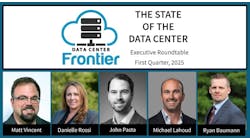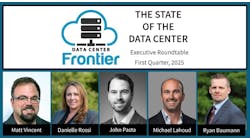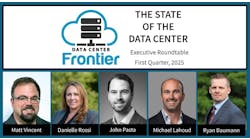Data Center Insights: Shannon Hulbert of Opus Interactive
The Data Center Frontier Executive Roundtable features insights from industry executives with lengthy experience in the data center industry. Here’s a look at the insights from Shannon Hulbert of Opus Interactive.
Shannon Hulbert, CEO of Opus Interactive, was recently named to Mirror Review’s Top 10 Most Prominent Leaders in Cloud Computing. With a footprint in Iron Mountain’s FISMA-High facility in Manassas, the hybrid cloud and colocation company has achieved 30% growth year over year since 2012 and was included in the Inc. 5000 Fastest Growing Private Companies in the nation for the past 2 years. The company was named to the 2019 CRN Next-Gen 250 List, annual list that recognizes standout IT solution providers that embrace emerging technologies to adapt to an evolving marketplace. A recipient of NCAIED’s Native American 40 Under 40, Shannon brings over 20 years of strategy, marketing, and brand development expertise and currently holds memberships in Infrastructure Masons, Portland Business Journal Leadership Trust, and the Pacific Northwest Defense Coalition.
Prior to her work with Opus Interactive, Shannon headed a marketing services company and specialized in federal, state, tribal, and private initiatives in the energy, tech, and health industries. Her experience includes over 7 years marketing utility energy-efficiency programs across the nation spanning lighting, products, residential, commercial commissioning and retrocommissioning, grocer and multi-family programs, including lead design work for 6 ENERGY STAR award winning programs.Shannon is also founder of Redbridge Foundation, 501c3 host of the Energy & Tech Tour. The Tour is the first road tour/summer camp committed to educating underserved youth on STEM-related careers in energy and tech. She is an advocate for women in tech, STEM, sustainable energy, and rural connectivity.
Here’s the full text of Shannon Hulbert’s insights from our Executive Roundtable:
Data Center Frontier: What will delivery timetables for new data center capacity look like in 2023? Will the combo of supply chain issues, power constraints and staff shortages have an impact on supply?
Shannon Hulbert: It's taken several quarters and factors for the industry to reach this point - geopolitical energy supply impacts, post- pandemic leveling out, supply chain, power constraints and the movement to hybrid and multi-cloud strategies. We’ll continue to see supply be impacted.
Also being tested is the strength of business models and service offerings. The industry is right-sizing itself and we’ll likely see a group of battle-tested services and organizations emerge on the other side of 2024.
Data Center Frontier: What’s the state of the edge computing market, and how does it compare to your expectations? What are the use cases that are gaining traction?
Shannon Hulbert: Ooh....are we approaching a time when unused compute of cars and phone data will be used as infrastructure for the edge? In terms of real world use cases for edge computing - Tesla and SpaceX are probably furthest along in deployment of infrastructure and application.
First car data-as-a-service (withTesla), now a true satellite-to-cellular service partnership with T-mobile.
Data Center Frontier: How would you assess enterprise IT demand, and what do you see ahead in 2023?
Shannon Hulbert: Managed hosting and hybrid and multi-cloud services are growing in demand. Some of the growth can be attributed to the factors impacting the industry right now, and some is the result of a maturing industry.
Savvy IT buyers are building to take advantage of solutions that offer the right levels of security, compliance, location, and cost. We’ll see more or that in 2024 and beyond.
Data Center Frontier: What will be the important themes in sustainability in 2023 for data centers and cloud operators?
Shannon Hulbert: Availability, cost, and long term reliability are driving demand for energy-efficiency and investment in renewables and innovative energy solutions. I think this trend will become part of the fabric of the way the industry delivers both power and water. Save energy/water, save costs.
Micro grids and energy optimization isn’t a want-to-have for some organizations to differentiate, it’s the norm to meet reliability and cost requirements.







